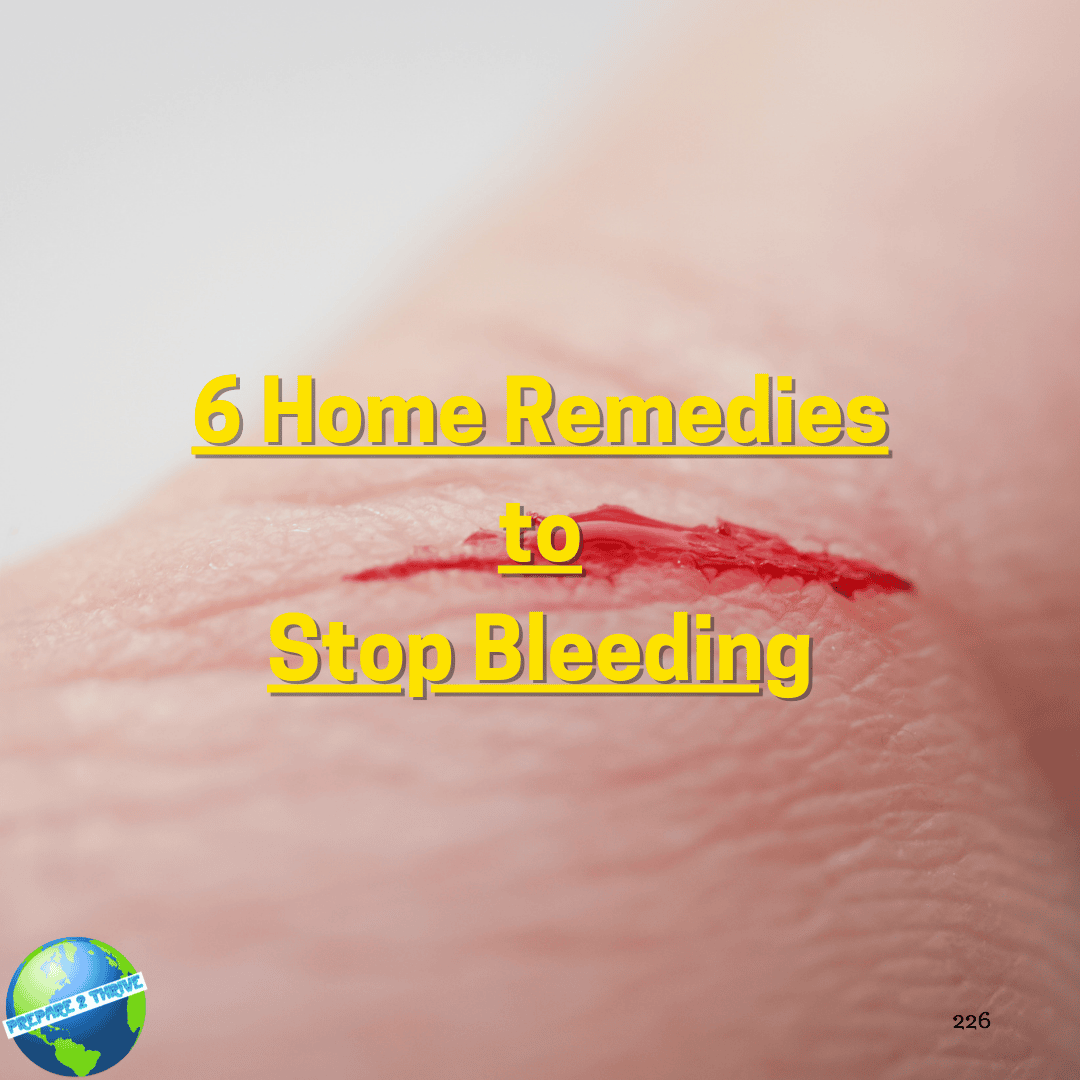If you're looking for ways to control bleeding from minor cuts or scrapes, some home remedies may offer assistance. However, not all are backed by extensive scientific studies, so it's important to proceed with caution and consult with a healthcare professional if necessary.
Even small cuts, especially those in sensitive areas like the mouth, can bleed heavily. Normally, your body's platelets will begin to clot on their own, but if you'd like to speed up the process, certain home remedies can potentially help. These methods aim to accelerate blood clotting, but their effectiveness may vary, and medical consultation is advised if bleeding persists.
Here are six common home remedies for stopping bleeding, along with the available research on each.
1. Apply Pressure and Elevate
When a cut or wound occurs, the first step is to apply direct pressure and elevate the injured area above your heart. A clean cloth or gauze should be used to press down firmly on the wound.
If blood begins to soak through the cloth, resist the urge to remove it, as this could disrupt the clotting process. Instead, layer another piece of cloth or gauze on top and continue pressing.
Maintain pressure for 5-10 minutes before checking if the bleeding has slowed or stopped. If it continues, apply pressure for another five minutes. If bleeding persists, seek medical assistance.
2. Ice
Applying ice to a wound, especially one inside the mouth, is a common way to reduce both bleeding and swelling. Though not heavily studied, some research suggests that cooler temperatures may slow down the clotting process.
How to use: Wrap an ice cube in gauze and apply it directly to the affected area. Avoid using ice if you are experiencing abnormal body temperatures.
3. Tea
Tea, particularly green or black tea, is often used to stop bleeding after dental procedures. The tannins found in caffeinated teas may promote clotting due to their astringent properties, helping reduce bleeding.
One study suggested that green tea might be especially useful after dental extractions, helping to reduce bleeding more effectively than gauze alone.
How to use: Wet a green or black tea bag and wrap it in gauze. Apply the compress to the wound inside your mouth, or press a dry tea bag directly on external cuts. Hold it in place with consistent pressure for 30 minutes or more.
4. Yarrow
The yarrow plant has a long history of being used for its medicinal properties, including its ability to help stop bleeding. Legend has it that Achilles used yarrow to treat wounds in battle, and modern studies have found some evidence supporting its wound-healing properties.
How to use: Yarrow powder, made from dried yarrow, can be applied directly to the wound. You can also use fresh yarrow leaves or flowers. Press the herb onto the wound and elevate the injured area above your heart.
5. Witch Hazel
Witch hazel is known for its astringent properties, which may help reduce bleeding in small cuts. Astringents work by tightening skin tissues and promoting clotting. Though more research is needed, witch hazel remains a popular home remedy for minor wounds.
How to use: Soak a gauze pad in witch hazel and apply it to the bleeding area. Ensure that the witch hazel is pure and free from added alcohol or other ingredients.
6. Vitamin C and Zinc
Vitamin C powder and zinc lozenges are believed to help with blood clotting, especially after dental procedures. Some studies suggest that applying vitamin C powder to bleeding gums can reduce bleeding, followed by zinc lozenges to aid clot formation.
How to use: Use pure, unsweetened vitamin C powder and apply it directly to the bleeding area. Follow with a zinc lozenge to help the wound heal. Both items are commonly available at drugstores.



